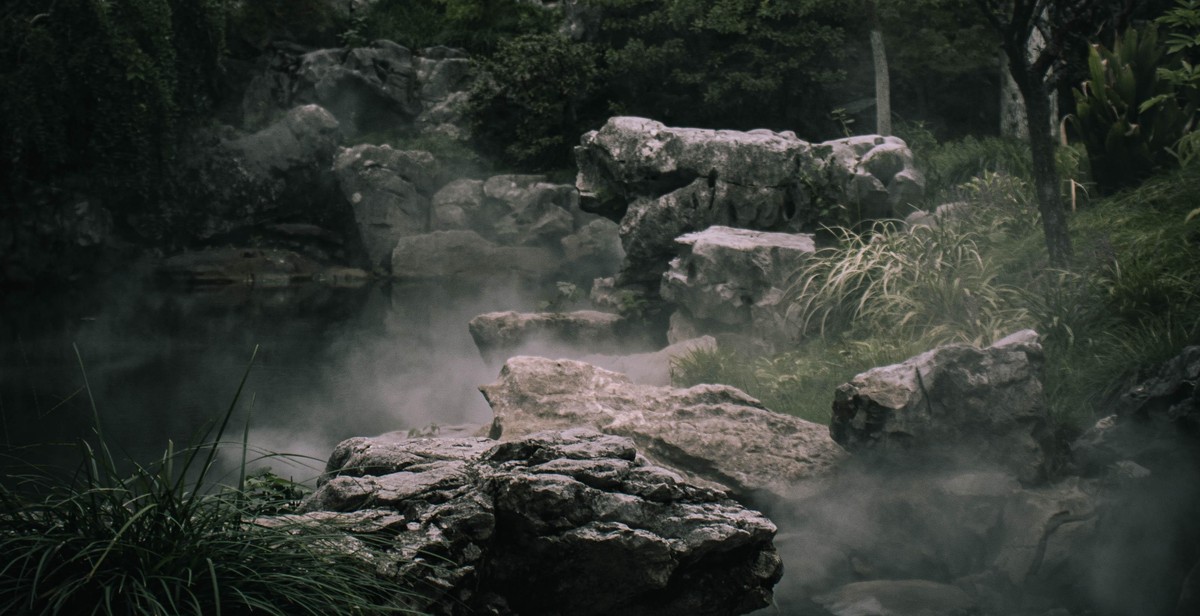How to Build a DIY Raised Pond in Your Garden
If you’re looking to add a water feature to your garden, a raised pond is a great option. Not only does it provide a beautiful focal point, but it also allows you to keep fish and aquatic plants without the need for a large, in-ground pond. Plus, building a raised pond yourself can be a fun and rewarding DIY project.
Why Build a Raised Pond?
There are several reasons why a raised pond might be the right choice for your garden:
- Space: A raised pond takes up less space than an in-ground pond, making it a good option for smaller gardens.
- Safety: Raised ponds are safer for children and pets, as they are less likely to fall in.
- Accessibility: A raised pond can be built at a height that is comfortable for you to maintain and enjoy.
- Cost: Building a raised pond can be more cost-effective than installing an in-ground pond, especially if you do the work yourself.
Now that you know why a raised pond might be the right choice for your garden, it’s time to get started on building your own. In the following sections, we’ll walk you through the steps to create a beautiful and functional raised pond that you’ll enjoy for years to come.
Planning and Preparation
Building a raised pond in your garden can be a great addition to your outdoor space. Not only does it add aesthetic value, but it can also provide a habitat for aquatic plants and animals. However, before you jump into the construction process, it’s important to plan and prepare properly. Here are some key steps to consider:
Choosing the Right Location
The location of your raised pond is crucial for its success. You want to choose an area that is level and receives adequate sunlight. Avoid placing it under trees or in areas that are prone to flooding. Consider the proximity to your home and any existing water sources, such as a hose or irrigation system.
Determining the Size of the Pond
The size of your raised pond will depend on the available space in your garden and your personal preferences. Consider the number and size of the aquatic plants and animals you want to keep, as well as the depth of the pond. A good rule of thumb is to make the pond at least 18 inches deep to ensure the survival of fish and plants during winter months.
Gathering the Necessary Materials
Before you begin construction, you’ll need to gather all the necessary materials. This may include cinder blocks, bricks, or other materials to build the walls of the pond. You’ll also need a liner to prevent leaks, a pump and filter system to maintain water quality, and aquatic plants and animals to stock the pond. Make a list of all the materials you’ll need and purchase them ahead of time to avoid delays in the construction process.
- Cinder blocks or bricks
- Liner
- Pump and filter system
- Aquatic plants and animals
By taking the time to plan and prepare properly, you’ll be able to build a beautiful and functional raised pond in your garden. In the next section, we’ll go over the step-by-step process of building the pond.

Building the Raised Pond
Now that you have gathered the necessary materials and tools, it’s time to start building your DIY raised pond. This section will guide you through the steps of excavating the area, constructing the frame, installing the liner, adding water, and finishing touches.
Excavating the Area
The first step in building a raised pond is to excavate the area where you want to place it. Use a shovel or a mini excavator to dig out the soil to the desired depth and shape. Make sure to remove any roots, rocks, or debris that may puncture the liner. You can also level the ground using a rake to ensure that the pond is stable and even.
Constructing the Frame
Once you have excavated the area, it’s time to construct the frame of the raised pond. Use pressure-treated lumber or cedar boards to build a sturdy and durable frame that can withstand the weight of the water. You can use a circular saw or a miter saw to cut the boards to the desired length and angle. Use galvanized screws or nails to secure the boards together. You can also add corner braces or brackets to reinforce the frame.
Installing the Liner
After the frame is constructed, it’s time to install the liner. Use a heavy-duty pond liner made of EPDM rubber or PVC material that is UV-resistant and puncture-proof. Place the liner over the frame and make sure that it covers the entire pond area, with some extra material hanging over the edges. Smooth out any wrinkles or folds in the liner and use bricks or rocks to hold it in place temporarily.
Adding Water
Once the liner is installed, it’s time to add water to the pond. Use a garden hose or a bucket to fill the pond with water slowly, while adjusting the liner to fit the shape of the pond. Make sure that the water level is even and that there are no leaks or tears in the liner. You can also add a pond pump or filter to keep the water clean and oxygenated.
Finishing Touches
Finally, it’s time to add some finishing touches to your DIY raised pond. You can add decorative elements such as rocks, plants, or statues around the pond to enhance its visual appeal. You can also install a fountain or a waterfall to create a soothing sound and movement of water. Make sure to maintain the pond regularly by cleaning the filter, removing debris, and adding fresh water.
Maintenance and Care
Once you have built your DIY raised pond, it is important to take care of it to ensure that it stays in good condition and your fish and plants thrive. Here are some important maintenance and care tips to keep in mind:
Checking the Water Quality
The water in your pond is the life support system for your fish and plants, so it is important to regularly check the water quality to ensure that it is healthy. You can purchase a water testing kit from a pet store or online to test for pH, ammonia, nitrate, and nitrite levels. Ideally, the pH should be between 6.5 and 8.5, ammonia and nitrite levels should be at zero, and nitrate levels should be below 40 ppm.
Maintaining the Pond Equipment
Regular maintenance of the pond equipment is necessary to ensure that it functions properly. Check the pump and filter regularly to ensure that they are working correctly and clean them as needed. Replace the filter media and UV bulbs as recommended by the manufacturer. If you live in an area with freezing temperatures, it is important to remove the pump and store it indoors during the winter months.
Cleaning the Pond
Regular cleaning of the pond is important to remove debris and prevent the buildup of harmful bacteria. Use a pond net to remove leaves and other debris from the surface of the water. Vacuum the bottom of the pond with a pond vacuum to remove any debris that has settled there. It is also important to periodically drain and refill the pond to remove excess nutrients and freshen the water.
| Task | Frequency |
|---|---|
| Check water quality | Weekly |
| Maintain pond equipment | Monthly |
| Clean pond | Seasonally |
By following these maintenance and care tips, you can ensure that your DIY raised pond stays in good condition and provides a healthy environment for your fish and plants to thrive.

Conclusion
Building a DIY raised pond in your garden is a great way to enhance the beauty of your outdoor space. Not only does it add a unique feature to your garden, but it also provides a great place to relax and enjoy the sound of running water. With the right tools, materials, and some basic knowledge, you can easily build a raised pond in your garden without breaking the bank.
Tips for Success
- Plan the size and location of your pond carefully before starting the project
- Use high-quality materials to ensure your pond lasts for years to come
- Ensure proper water circulation and filtration to keep your pond clean and healthy
- Regularly maintain your pond by cleaning the filters and removing debris
Final Thoughts
Building a DIY raised pond in your garden can be a fun and rewarding project. With a little bit of effort and creativity, you can create a beautiful and relaxing oasis in your outdoor space. Whether you choose to keep fish or simply enjoy the sound of running water, a raised pond is sure to be a great addition to your garden.
| Pros | Cons |
|---|---|
| Easy to build with basic knowledge and tools | May require regular maintenance to keep clean and healthy |
| Provides a unique feature and enhances the beauty of your garden | May be more expensive than other garden projects |
| Creates a relaxing and peaceful atmosphere with the sound of running water | May require a permit depending on the size and location of the pond |
